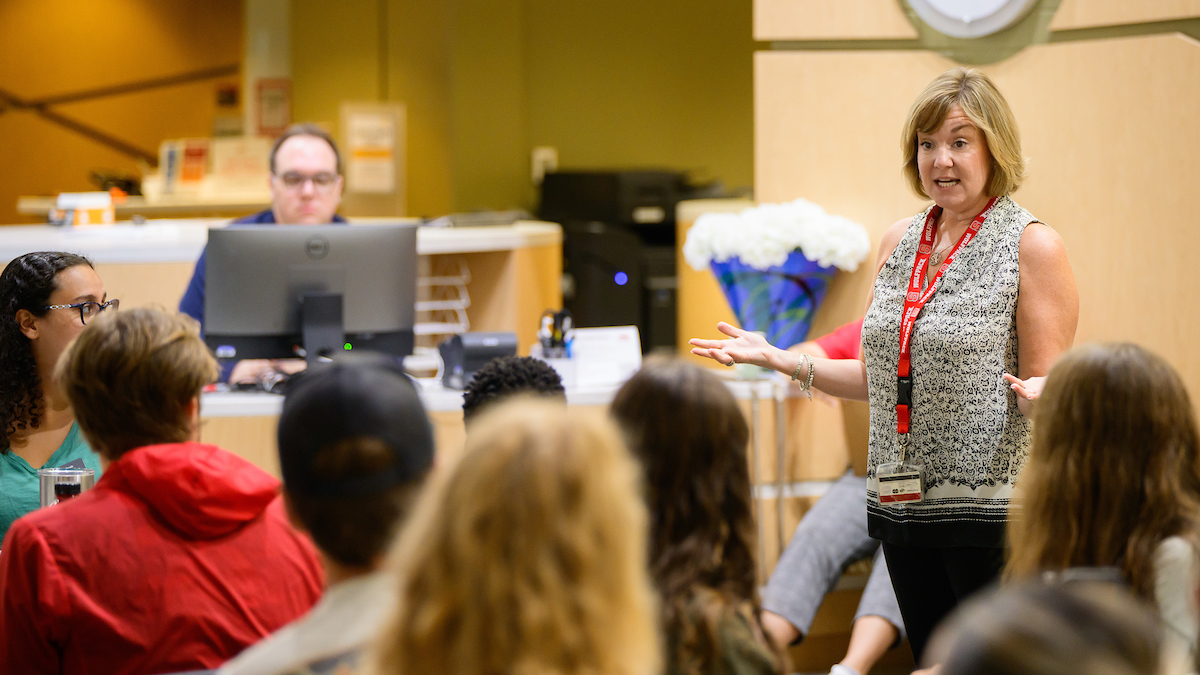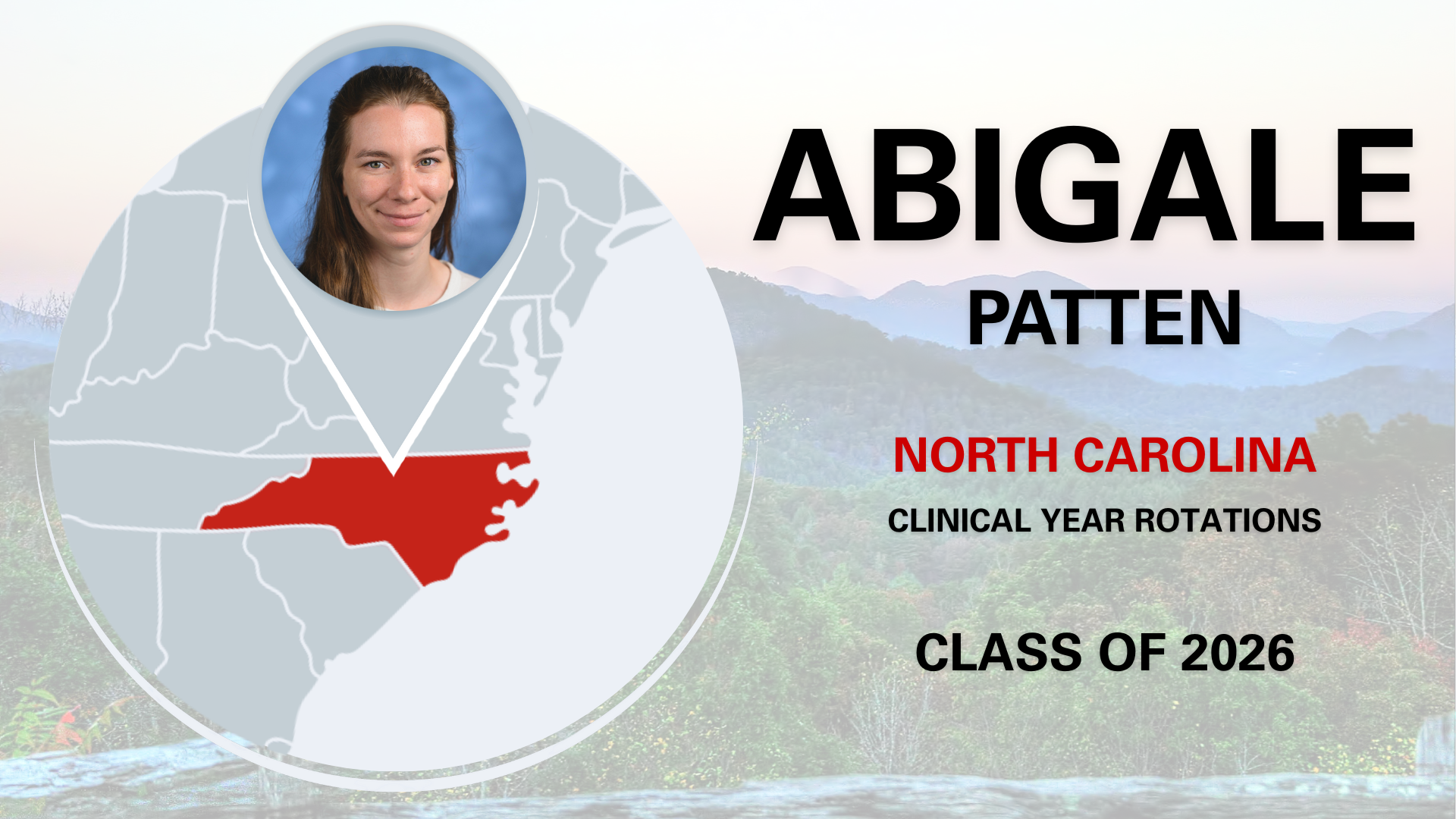Giant Bullfrogs to Ferrets – NC State Veterinary Students Examine Them All
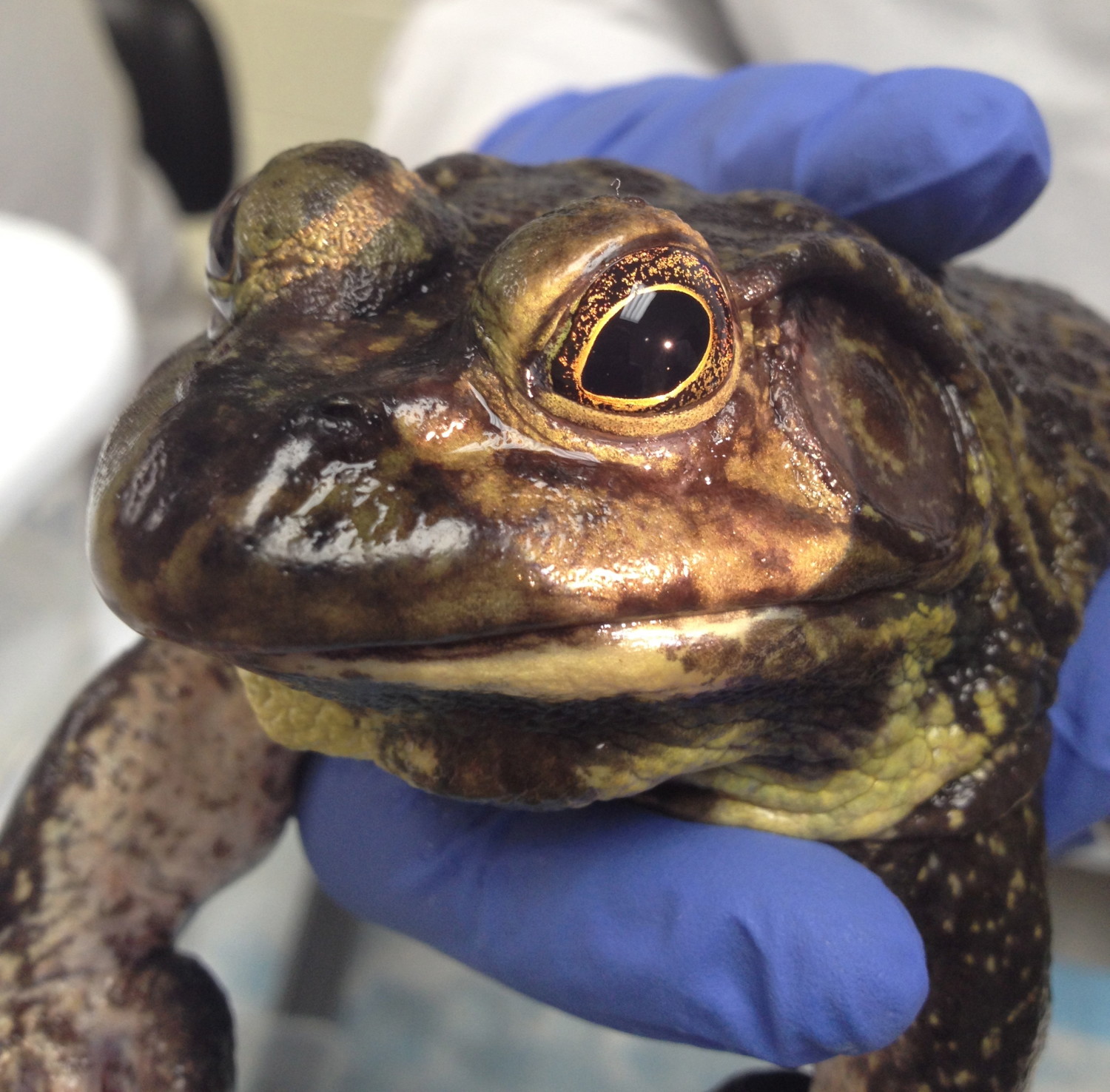
Sarah Blau, a member of the Class of 2017 at NC State University’s College of Veterinary Medicine, is sharing some of what she learns and experiences as a second-year veterinary student with readers of the CVM News Central Blog. Watch for these postings on a monthly basis
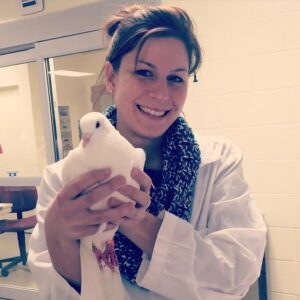
Have you ever looked deep into the eyes of a giant bullfrog? I have. Beyond the gloriously gold speckled iris, through the yellow-rimmed pupil, I could see, actually SEE, the frog’s blood pulsing through a retinal artery. Shifting streaks from pale pink to bright red and back again—I could have counted that amphibian’s heart rate through its eye! This is one of the coolest things I have seen so far in my journey through veterinary school.
Veterinary medicine is not just about dogs, cats, horses, and cows. As students, we learn about many species. Bullfrogs were the main focus of a recent laboratory session for a class called Physical Exam Skills. This course teaches us the fundamentals of performing physical exams on patients of all shapes and sizes. Last semester we worked mainly with dogs, but this semester the creatures are a bit more exotic. We’ve learned the basics of handling and examining many common exotic pets and laboratory animals such as birds, rodents, other small mammals, amphibians, and reptiles. Our class discussions have also included wildlife capture and safety techniques, and even an introduction to fish medicine.
The highlight of the course is a hands-on laboratory session that accompanies most lecture topics. We’ve now performed physical exams on real-life pigeons, rats, guinea pigs, rabbits, ferrets, and of course, giant bullfrogs. Next week we will examine snakes, and I can hardly wait!
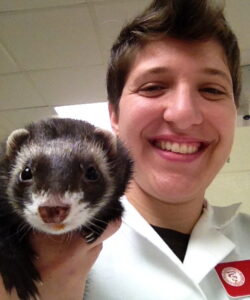
While I imagine most of my patients after graduation will be dogs and cats, I know that veterinarians can be presented with all sorts of animals, and it’s great to have a working knowledge of the basics for different species. For example, I now know that rabbits need to be carried and handled very carefully because their back legs are so strong, if a bunny kicks its feet out, it risks breaking its back! Species differences are an important consideration as well. I’ve recently learned that amphibians absorb water through their skin, so you can anesthetize a frog just by placing it in a tub of water containing a diluted anesthetic! But this also means amphibians are especially sensitive to chemicals in their environment. These are just two examples of what I’ve learned from lab that highlight the amazing diversity of exotic animals and help prepare me for anything I might encounter in my career.
My favorite laboratory session so far has been the ferret lab. Local ferret owners graciously brought in their little fur-babies for us to practice our new exam techniques. I had never held or interacted with a ferret before that day, but these elongate “cat-snakes” won my heart over quickly. It’s amazing that so much personality, curiosity, and mischief can fit into such a little slinky critter. In addition to falling for the ferrets, I was educated and impressed by the ferret owners who were present during our lab. The folks I spoke with are some of the most knowledgeable pet owners I have met, and they taught me much about common ferret mannerisms and illnesses to watch out for in practice.
This class has certainly peaked my interest in exotic species, especially small mammals. Following this course I intend to spend some time shadowing with the Exotic Animal Medicine Service at the College of Veterinary Medicine’s Veterinary Health and Wellness Center and other local veterinary practices that treat exotic species. I look forward to learning more about these fantastic creatures so that if one ever walks, crawls, hops, flies, or slinks into my veterinary clinic, I’ll be ready.
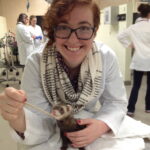
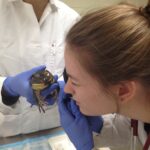
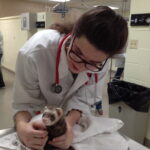
- Categories:

